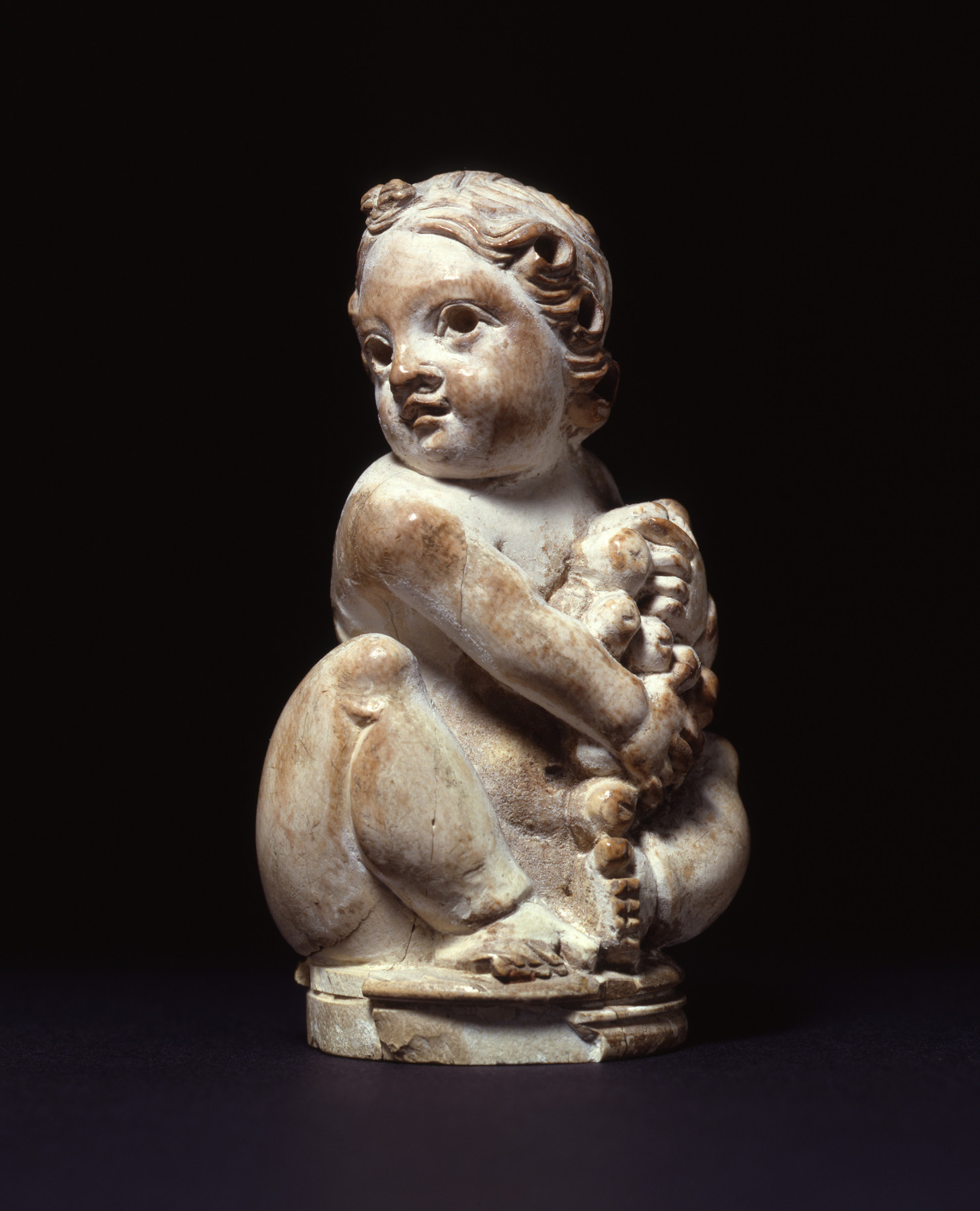Boy Holding Grapes
(Roman Empire )
A finely carved figure of a seated boy holding a bunch of grapes, modeled in the round. He looks over his shoulder as if afraid someone might steal his fruit. His eyes were once inlaid with bits of glass. A number of bone or ivory knife handles of similar pattern exist showing boys holding birds. The circular base, chipped on one side, has a round hole underneath, and the figure is partially hollowed to receive a tang. A 4th-century date has been proposed based on comparisons with the hairstyles of 4th-century sculpture. But the ivory is said to have been found at ancient Hermopolis in Egypt with a collection of 2nd-century Roman silver now in the Antikenabteilung, Staaliche Museen, Berlin, and might therefore be earlier.
The pose and subject are derived from Hellenistic sculpture.
Provenance
Provenance (from the French provenir, 'to come from/forth') is the chronology of the ownership, custody, or location of a historical object. Learn more about provenance at the Walters.
Paris market, ca. 1900; Michel Boy Collection, Paris [date and mode of acquisition unknown]; Michel Boy Sale, Paris, May 24, 1905, no. 578; Henry Walters, Baltimore, 1905, by purchase; Walters Art Museum, 1931, by bequest.
Exhibitions
| 1983-1984 | Ivory: The Sumptuous Art. The Walters Art Gallery, Baltimore. |
| 1947 | Early Christian and Byzantine Art. Baltimore Museum of Art, Baltimore. |
Conservation
| Date | Description | Narrative |
|---|---|---|
| 5/19/1958 | Treatment | repaired |
Measurements
H: 2 9/16 x W: 1 1/8 in. (6.5 x 2.8 cm)
Credit Line
Acquired by Henry Walters, 1905
Location in Museum
Not on view
Accession Number
In libraries, galleries, museums, and archives, an accession number is a unique identifier assigned to each object in the collection.
In libraries, galleries, museums, and archives, an accession number is a unique identifier assigned to each object in the collection.
71.602




